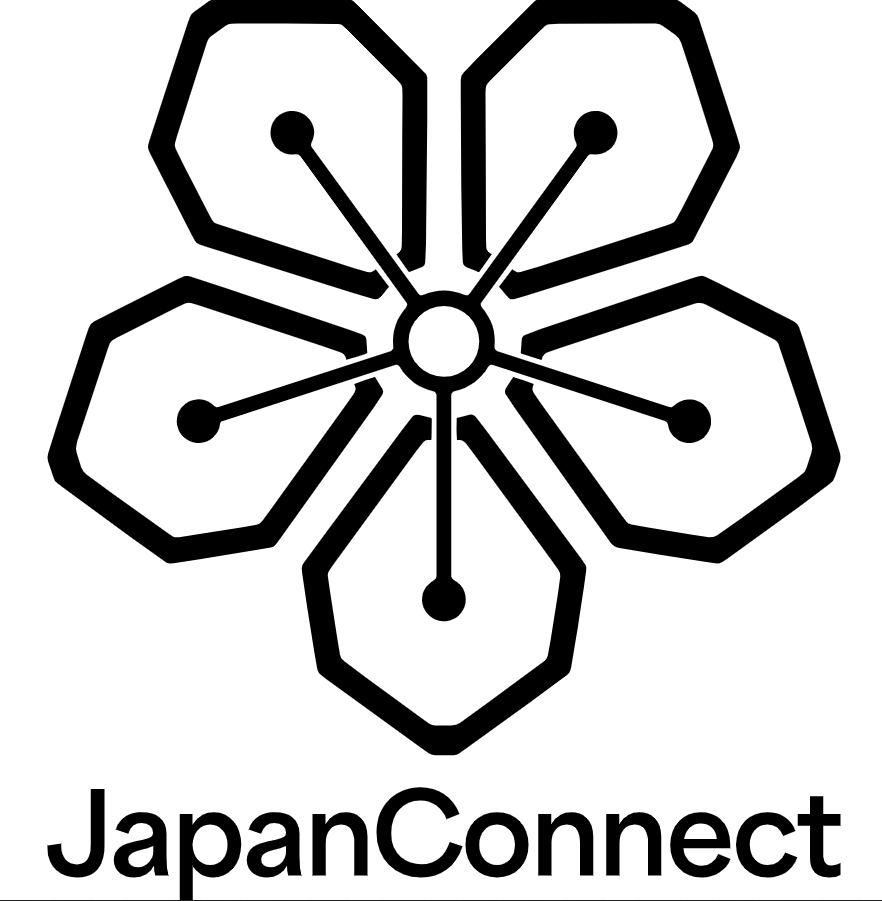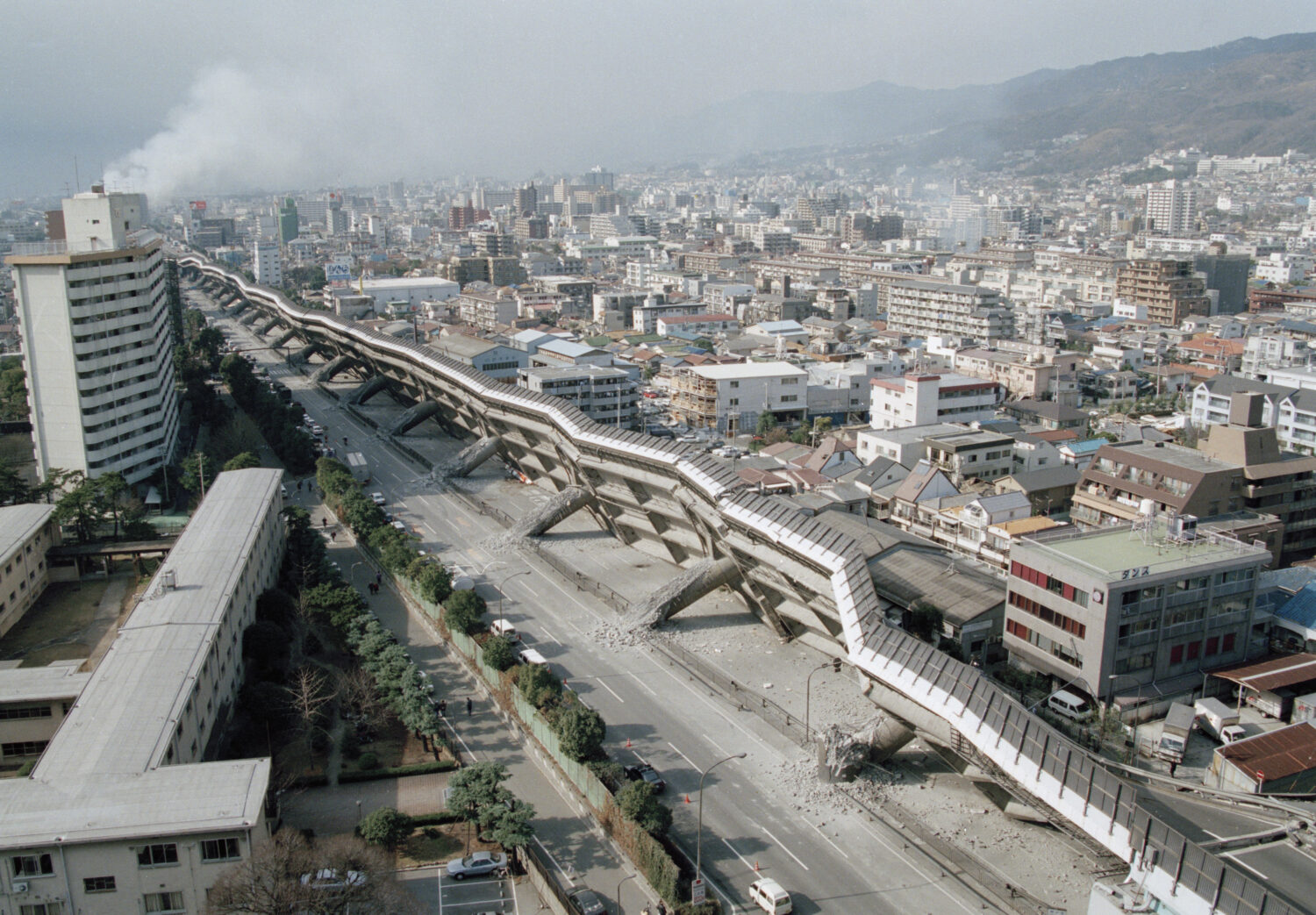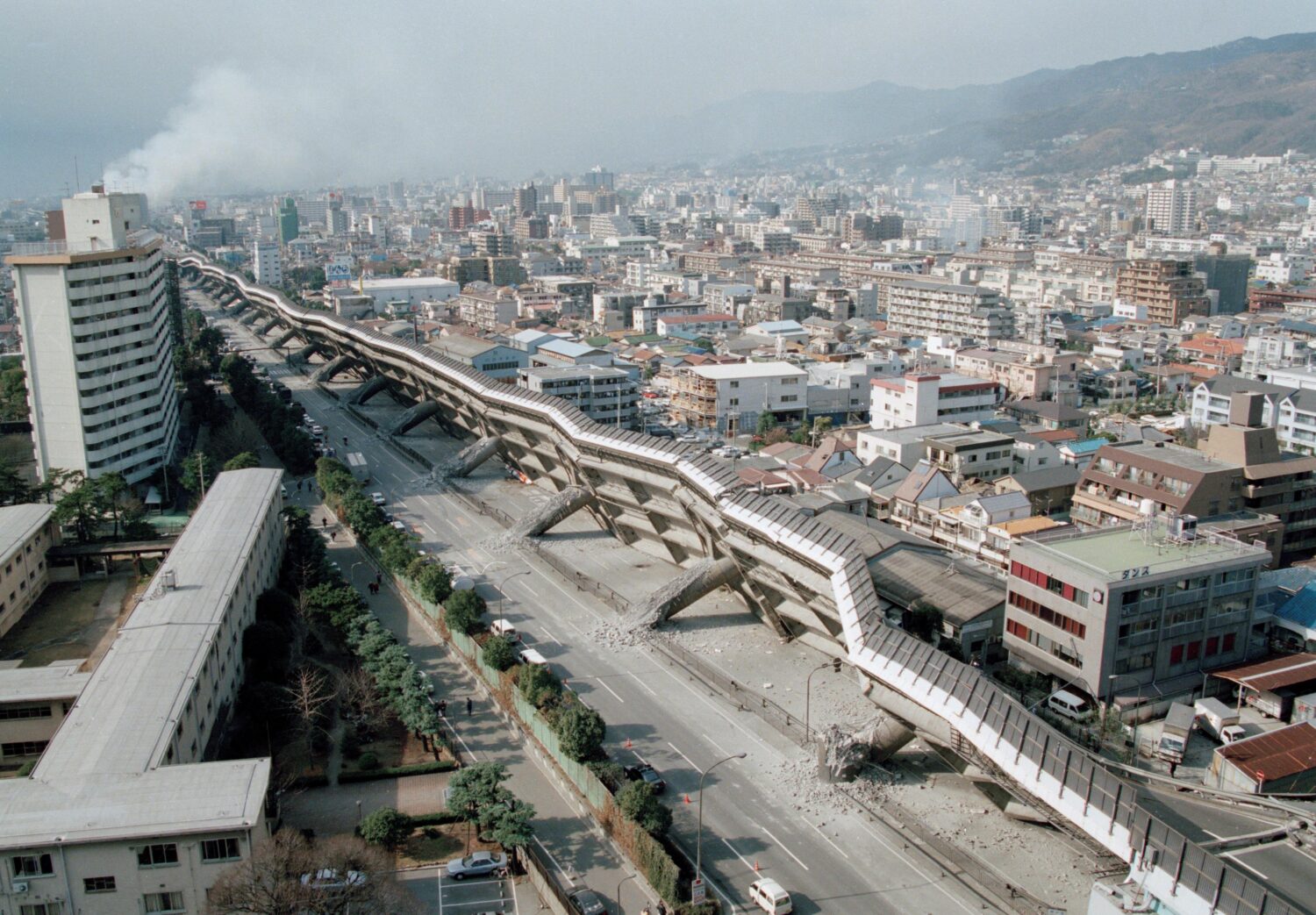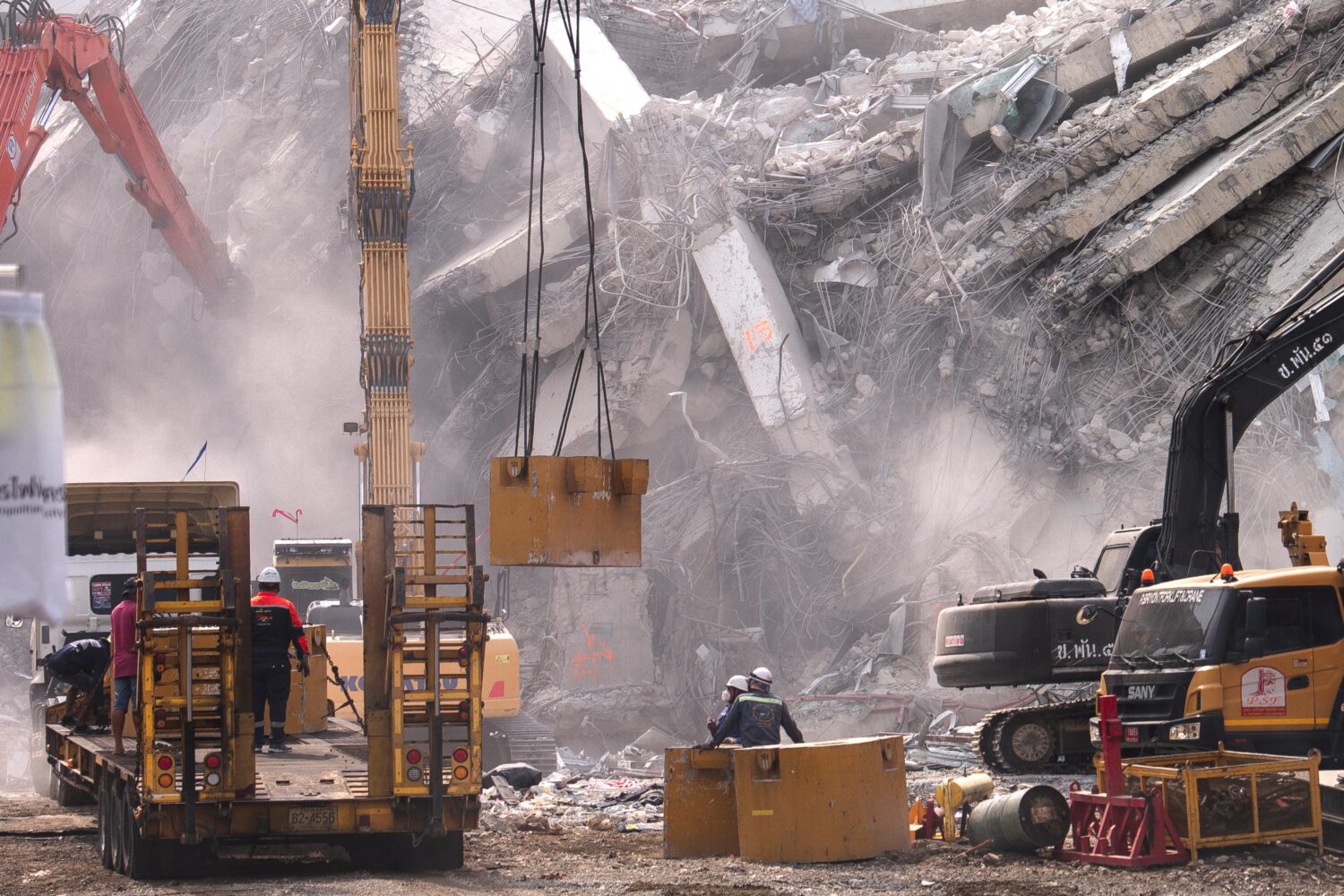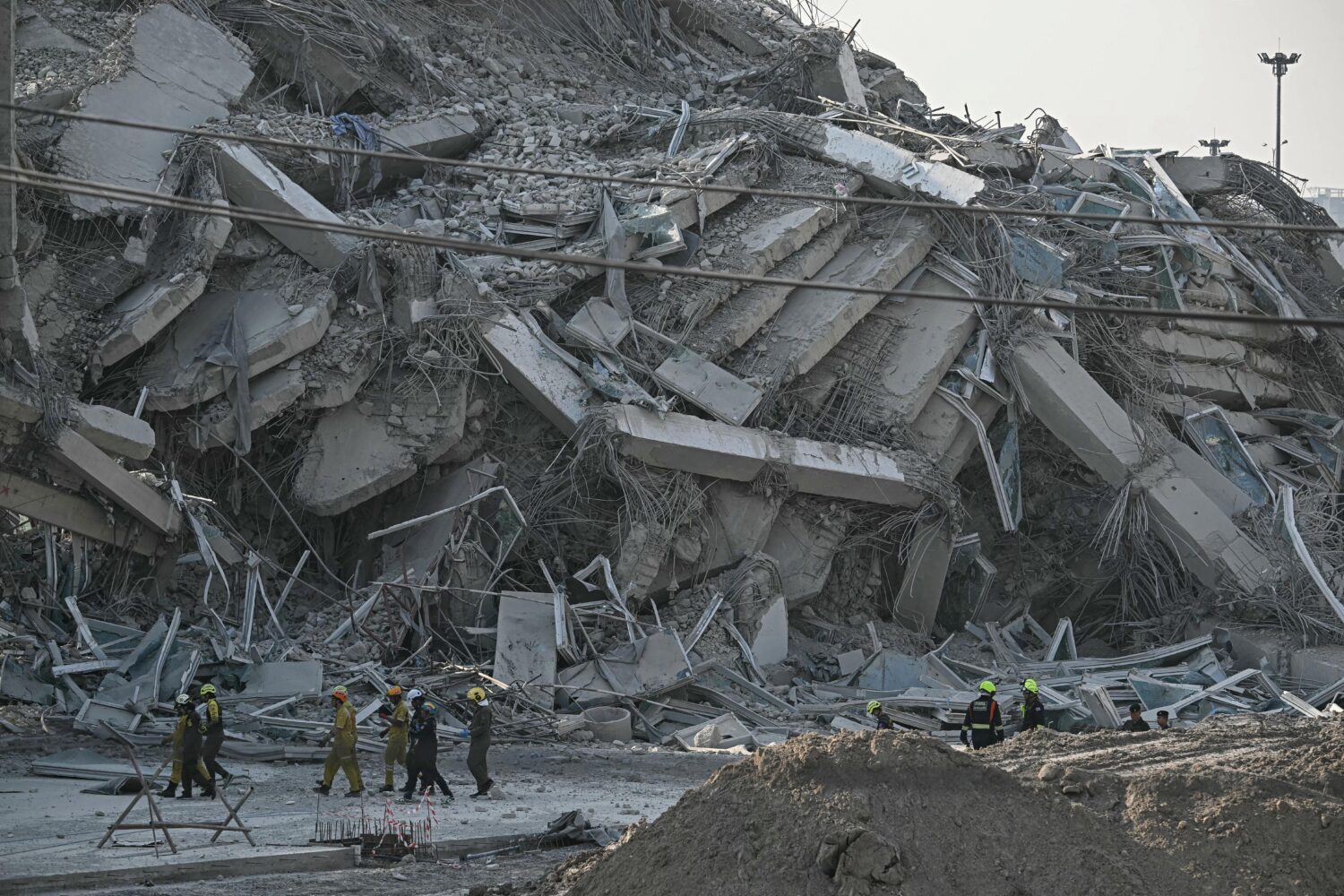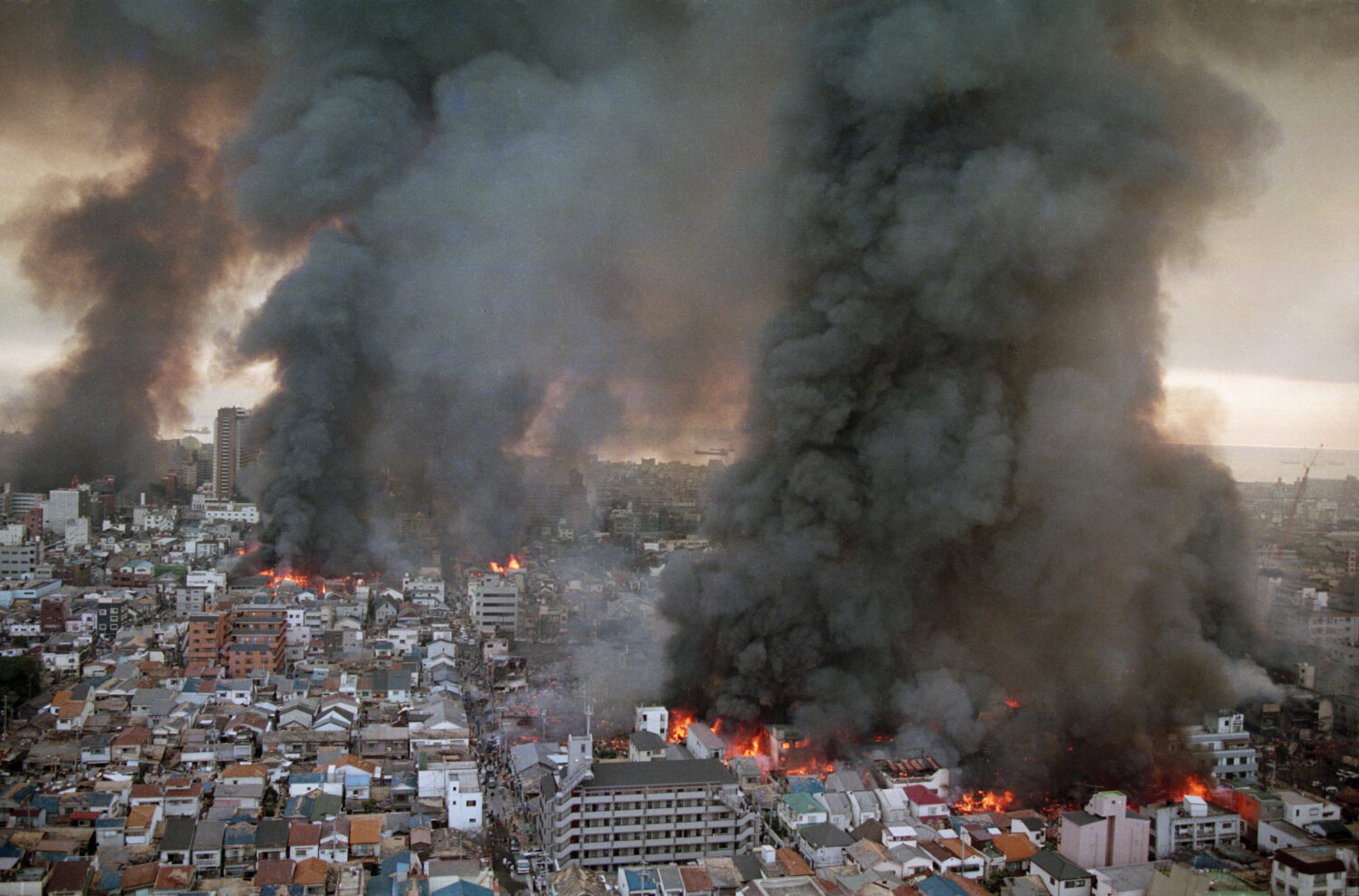“Buildings in Myanmar differ from those in Japan in terms of structural strength and how they’re built. There’s a real risk of entire buildings collapsing.” So warns Dr. Hideto Yoshioka, founder of the NGO Japan Heart. At the time of the earthquake, Dr. Yoshioka was administering pre-surgery anesthesia to a patient at a hospital near Mandalay, Myanmar’s second-largest city. After witnessing parts of the hospital collapse due to aftershocks, he deemed the operating room to be unsafe, and evacuated the anesthetized patient outside.
Bangkok’s “Unshakable Building”
The earthquake also caused damage in Bangkok, Thailand—about 1,000 kilometers from the epicenter. A roughly 30-story building under construction by a Chinese company collapsed, leaving nearly 100 people dead or missing. Reports suggest that the building was supported only by walls and columns, which may have led to a pancake collapse, and there are also allegations of substandard construction.
Widely praised in contrast was the O-NES TOWER, a 29-story office building in central Bangkok built by Thai Obayashi, a local subsidiary of Japanese construction company Obayashi Corporation. Long-period ground motions, which have cycles of over 2 seconds, tend to shake high-rise buildings violently. Many people in other buildings have described the sensation as “like being on a ship, so much so that I couldn’t even stand.” The O-NES TOWER, however, garnered attention on social media for not budging at all during the earthquake.
Opened in 2022, this building adopted three technologies that were unprecedented in Thailand, including filling the steel pipe columns with concrete to enhance earthquake resistance. The project gained further attention for its emphasis on meticulous quality control at every stage, from design through construction, and for its strict implementation of worker training and safety measures onsite. Following the earthquake, Thailand’s Ministry of Interior sought advice from the Japanese government on ensuring earthquake resistance and building safety, prompting Japan’s Ministry of Land, Infrastructure, Transport and Tourism to dispatch three officials, including a senior researcher, to Thailand.
Japan’s Earthquake-Resistance Technology Gains Ground
Japan, a country frequently struck by earthquakes, has repeatedly revised its Building Standards Act, establishing world-leading earthquake-resistance standards designed to prevent building collapse even during major earthquakes registering an upper 6 to 7 on Japan’s seismic intensity scale. Drawing on the lessons learned from the 1995 Great Hanshin Earthquake, which resulted in about 6,400 casualties, Japan has put a variety of technologies, from earthquake resistance to damping systems and seismic isolation, into practice, with efforts to utilize these experiences and technologies now expanding across Southeast Asia.
According to a report by the United Nations Development Programme (UNDP), Indonesia ranks second in the world for annual earthquake frequency, surpassing even Japan, which ranks fourth. In Indonesia’s capital, Jakarta, numerous high-rise buildings are being constructed using Japanese earthquake-resistance technologies that dramatically reduce shaking during earthquakes.
In 2021, the Trinity Tower, a 50-story office and commercial building developed by the Mitsubishi Estate Co. Group and Shimizu Corporation, opened in Jakarta’s central business district, known as the “Golden Triangle.” Following this, the 58-story Jakarta Mori Tower office building, a project by Mori Building Co. and Shimizu Corporation, was completed on Sudirman Street, a major thoroughfare, in 2022. These buildings utilize earthquake-resistant structures with reinforced concrete core walls (thick walls in the central part of the building) and steel-reinforced concrete perimeter columns, which are rare in Jakarta. These Japanese-developed high-rise buildings have become new landmarks, raising hopes for further adoption of Japanese technologies locally.
The Philippines, which is situated on the boundaries of massive tectonic plates covering the earth, also is at high risk of earthquakes, and suffers frequent typhoon damage. In the Manila metropolitan area’s new central business district (CBD), Bonifacio Global City (BGC), a commercial and residential high-rise complex called The Seasons Residences has already been partially completed. The complex, under the development of Isetan Mitsukoshi Holdings Ltd. and Nomura Real Estate Development Co., has been fitted with seismic dampers that absorb and mitigate vibrations, thus reducing shaking due to earthquakes and strong winds.
Meanwhile, the historic Chinabank building, over 100 years old and located in Manila’s Binondo district—home to the world’s oldest Chinatown—has also adopted seismic dampers from Sumitomo Rubber Industries Ltd. Japan’s earthquake-resistance technology is thus benefiting not only modern high-rises, but also historic structures.
Working toward Zero Earthquake Casualties
Over the past century, about 80 percent of earthquake fatalities worldwide have been caused by the collapse of buildings, many of which were constructed from stacked stone, brick, or concrete blocks. Noticing this, a Japanese startup has developed a new technology that has brought about widespread anticipation in Southeast Asia. The startup in question is Aster Co., founded in 2019 at the University of Tokyo.
“Mission: Zero earthquake deaths.” So says Aster co-founder and CEO Masaomi Suzuki. Appyling aerospace engineering knowledge he gained during his studies in the United States, he succeeded in blending resin and fibers—something that was previously thought to be impossible—to create a soft yet highly durable earthquake-resistant coating.
When applied to the walls of vulnerable buildings and left to dry for about two weeks, the coating dramatically improves earthquake resistance. The coating is inexpensive, can be produced locally, and does not require any special skills to apply.
This innovation has earned recognition, with their earthquake-resistant coating winning the grand prize at a startup business contest hosted by newspaper publisher Nikkei Inc. in 2022, and the Ministry of Land, Infrastructure, Transport and Tourism’s Japan Construction International Award in 2024.
A project is currently underway, in collaboration with the Japan International Cooperation Agency (JICA), to apply the coating in public schools in the Philippines, at 1/15th of the cost of rebuilding a classroom, according to estimations by Aster. Aster aims to “deliver a safer tomorrow” to children through the entirely new concept of “paintable earthquake resistance.” The company is also crowdfunding to provide the coating to elementary schools in Indonesia.
It has become clear that a significant portion of earthquake damage results from preventable, human-caused disasters—specifically, the failure of buildings with inadequate earthquake resistance. Across Southeast Asia, there is growing demand for initiatives that draw on Japan's earthquake experience and advanced technologies to help eliminate casualties.
By Akio Yaita
Journalist. Graduated from the Faculty of Letters at Keio University.
After completing his doctorate at the Chinese Academy of Social Sciences, he worked as a correspondent for the Sankei Shimbun in Beijing and as Taipei bureau chief. Author or co-author of many books.
The stories and materials above are provided by JIJI.com or AFPBBNews. Feel free to feature these stories in your own media.
